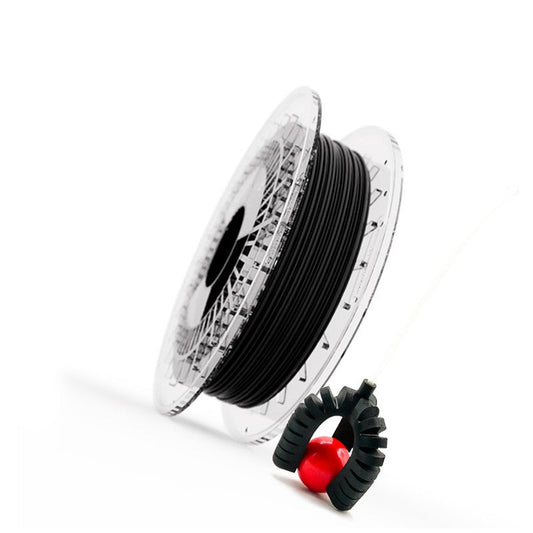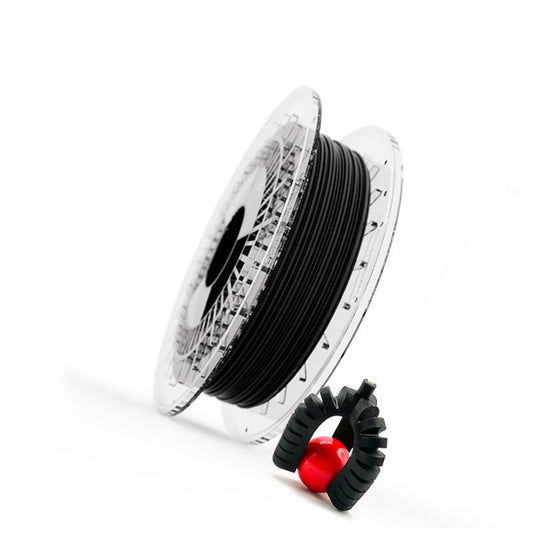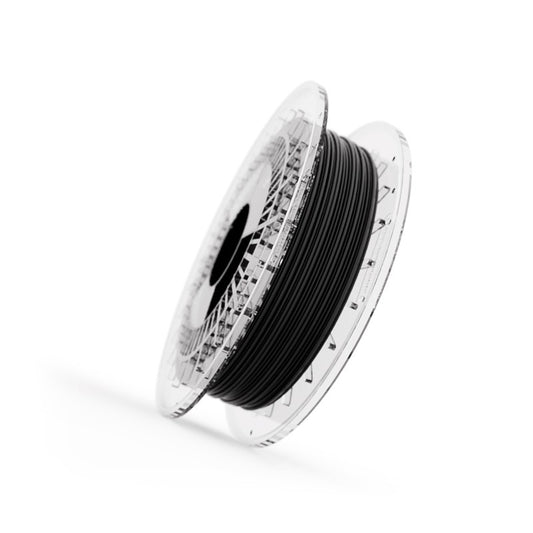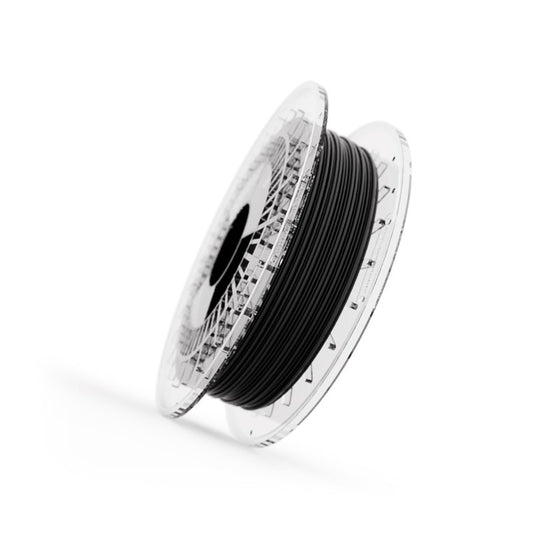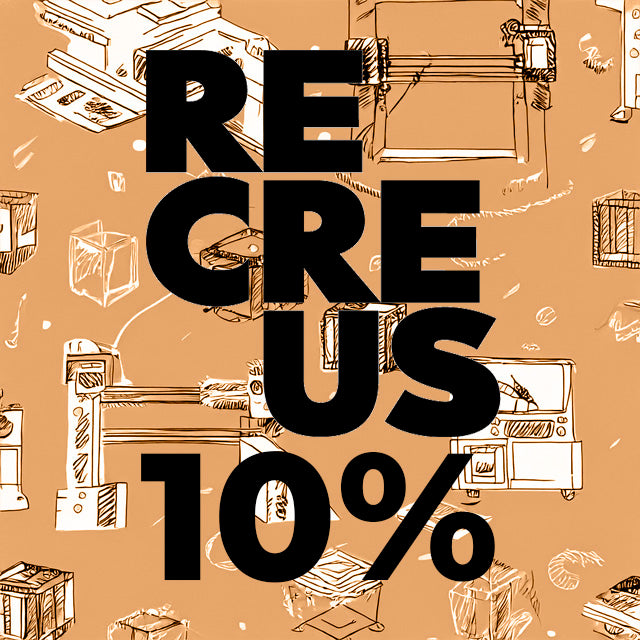Was ist 'Shore-Härte'?
Verständnis der Shore-Härte: Ihr Leitfaden zur Auswahl von flexiblen Filamenten
Beherrschen Sie die Schlüsselkonzepte der Shore-Härte, um das perfekte flexible Filament für Ihre 3D-Druckprojekte auszuwählen
Nicht alle flexiblen Filamente oder TPU sind gleich geschaffen. Mit zahlreichen verfügbaren Optionen und Begriffen wie Shore-Härte, Shore A und numerischen Werten wie 85, 90 oder 82, die häufig in Spezifikationen auftauchen, kann die Auswahl des richtigen Materials eine Herausforderung sein.
In diesem umfassenden Leitfaden werden wir die Shore-Härte entmystifizieren, ihre Bedeutung bei der Bestimmung der Filamentelastizität erklären und Ihnen helfen, informierte Entscheidungen für Ihre spezifischen Anwendungsbedürfnisse zu treffen. Lassen Sie uns in die Welt der flexiblen Materialien eintauchen!

Was ist TPU-Flexfilament?
Ein flexibles TPU-Filament ist ein Elastomermaterial, eine Art von Kunststoff, dem eine Reihe von Zusatzstoffen zugesetzt wird und mit dem elastische Teile hergestellt werden können. Aufgrund seiner Eigenschaften wird es häufig in vielen Branchen verwendet und ist ein sehr beliebtes Material im Mode-/Textilsektor.
Wie oben erwähnt, sind nicht alle flexiblen Filamente gleich, aber innerhalb ihrer Palette gibt es eine große Vielfalt und wir können den Typ oder das Niveau der Flexibilität oder Elastizität wählen, das wir möchten. Wenn wir ein sehr elastisches Stück erstellen wollen, benötigen wir ein flexibles Filament, das sehr elastisch ist, oder umgekehrt, innerhalb der Palette des flexiblen Filaments möchten wir vielleicht ein Stück mit etwas Flexibilität, aber nicht zu viel.
Was ist die 'Shore-Härte' Skala?
Daher greifen wir, um das Maß oder die Intensität der Elastizität oder Flexibilität zu messen oder darüber zu sprechen, die wir von einem flexiblen Filament für die Erstellung eines Teils benötigen oder fordern, auf eine Messung und Skala zurück, die wir als "Shore-Härte" bezeichnen.
Thermoplastische Elastomere werden auf dieser Skala in Shore A und Shore D gemäß ISO 868 gemessen. Die Shore-Härte ist ein Maß für den Widerstand eines Materials gegen das Eindringen einer Nadel unter einer definierten Federkraft. Sie wird als Zahl von 0 bis 100 auf den Skalen A oder D bestimmt. Je höher die Zahl, desto größer die Härte. Der Buchstabe A wird für flexible Typen und der Buchstabe D für starre Typen verwendet. Die Bereiche überlappen sich jedoch.
"Shore-Härte": ist eine Skala, die die elastische Härte von Materialien misst, basierend auf der elastischen Reaktion des Materials, wenn ein Objekt darauf fällt. Sie wird als Zahl von 0 bis 100 auf den Skalen A oder D bestimmt. Je höher die Zahl, desto größer die Härte.
Wie viele Skalen gibt es?
Mehrere Shore-Härteskalen, definiert nach den verschiedenen Eigenschaften der Materialien, werden verwendet, um die Shore-Härte zu messen. Insgesamt gibt es laut ASTM D2240-00 12 Skalen (A, B, C, D, DO, E, M, O, OO, OOO, OOO-S und R), deren Werte von 0 bis 100 reichen und die Härte des Materials angeben.
Shore 'A' und Shore 'D' Skalen
Die bequemste Skala zur Messung von thermoplastischen Elastomerwerkstoffen (oder weicheren Kunststoffen) ist die Shore-A-Skala. Die D-Skala wird verwendet, um die härtesten Materialien zu messen. Somit entspricht ein Material mit einer Shore-Härte von 82 auf der A-Skala (wie unser Filaflex 82A 'Original' flexibles Filament) ungefähr einer Shore-Härte von 33 auf der D-Skala. Versuchen wir ein weiteres Beispiel. Filaflex 70A mit einer Shore-Härte von 70 auf der A-Skala wäre auf der D-Skala äquivalent zu einer Shore-Härte von 23.
Tabelle der Äquivalenzen zwischen den Skalen A und D
Als Nächstes werden wir eine Tabelle der Äquivalenzen zwischen den A- und D-Skalen bezüglich aller Shore-Härten unserer flexiblen Filamente aus der Filaflex-Familie sehen.

Darüber hinaus können wir in diesem Diagramm auch den Vergleich zwischen den Härteskalen Shore A und D sehen.
Beziehung: Shore A zu Shore D

Härtegrade aller flexiblen Filamente aus der Filaflex-Familie
Bei Recreus verwenden wir die Shore-A-Härteskala, um die flexiblen Filamente der Filaflex-Reihe zu klassifizieren, was es uns ermöglicht, ihren Elastizitätsgrad zu bestimmen und zu wissen, in welchen Anwendungen und/oder Teilen sie verwendet werden können.
Darüber hinaus verfügen wir bei Recreus über den breitesten und vielfältigsten Katalog an flexiblen 3D-Druckfilamenten mit unterschiedlichen Shore-Härtegraden. Wir bieten nicht nur Filamente mit unterschiedlichen Elastizitäten basierend auf ihrer Shore-Härte an, sondern wir haben auch spezielle Sorten, die sie einzigartig und unglaublich für jedes 3D-Druckprojekt machen. Diese Sorten umfassen leitfähige Eigenschaften, Zusatzstoffe, die helfen, die Umwelt zu reinigen, und 100% recycelte flexible Filamente für nachhaltigere Projekte.
Insbesondere in der Filaflex-Familie flexibler Filamente finden Sie die folgenden Materialtypen basierend auf ihrer Shore-Härte:
- ReciflexEs handelt sich um ein zu 100 % recyceltes flexibles Filament mit einer Shore-Härte von 96A bis 98A.
- Filaflex 95A, 'Medium-Flex': Semi-flexibel, mit einer Shore-Härte von 95A, sehr einfach zu druckendes flexibles Filament, kompatibel mit 100% der 3D-Drucker. 500% Dehnung.
- Filaflex Leitfähig: Mit einer Shore-Härte von 92A, ideal für die Herstellung elektrisch leitfähiger Teile oder Komponenten und tragbarer Geräte.
- Filaflex SEBS: TPE-Gummibasis, Shore-Härte von 90A, stark und haltbar, kann gebogen und in seine ursprüngliche Form zurückgebogen werden.
- Filaflex 82A, 'Original'Star-Filament mit einer Shore-Härte von 82A und einer Dehnung von 650%. Bestseller flexibler Filament.
- Filaflex PurifierDie Shore-Härte von 82A hilft, Verschmutzung zu mindern und die Umwelt zu reinigen.
- Filaflex FOAMYHärtegrad von 78A, kann mit dynamischer Schaumtechnologie auf 51A erreicht werden.
- Filaflex 70A, 'Ultra-Soft'Shore-Härte von 70A, hochelastisch mit 900% Dehnung.
- Filaflex 60A, 'Pro': Shore-Härte von 60A, das elastischste und glatteste druckbare Filament mit 950% Dehnung.
*Dehnung: Es ist der Prozentsatz der Streckung bis das Material bricht, solange seine Elastizitätsgrenze nicht überschritten wird.
Dehnung der Filamente der Filaflex-Familie

Probepackung der Filaflex-Familie. Testen Sie alle Härtegrade der Reihe!
Aufgrund der großen Nachfrage und Neugier, die Härte von Filaflex zu testen, haben wir das Probenpaket der Filaflex-Familie erstellt. Verfügbar in unserem Online-Shop in beiden Durchmessern (1,75 mm und 2,85 mm), einschließlich einer 50 g Probe jedes Filaments:
- 1 Probe von Filaflex 95A (schwarze Farbe)
- 1 Probe von Filaflex 82A (graue Farbe)
- 1 Probe von Filaflex 70A (transparente Farbe)
- 1 Probe von Filaflex 60A (weiße Farbe)
Es ist das perfekte Produkt, damit Sie die gesamte Palette von Filaflex testen können, ohne die Kosten einer größeren Spule für Tests mit Ihrem Drucker tragen zu müssen.
Jetzt, da Sie wissen, was 'Shore-Härte' bedeutet, welche Filaflex-Härte möchten Sie drucken?





